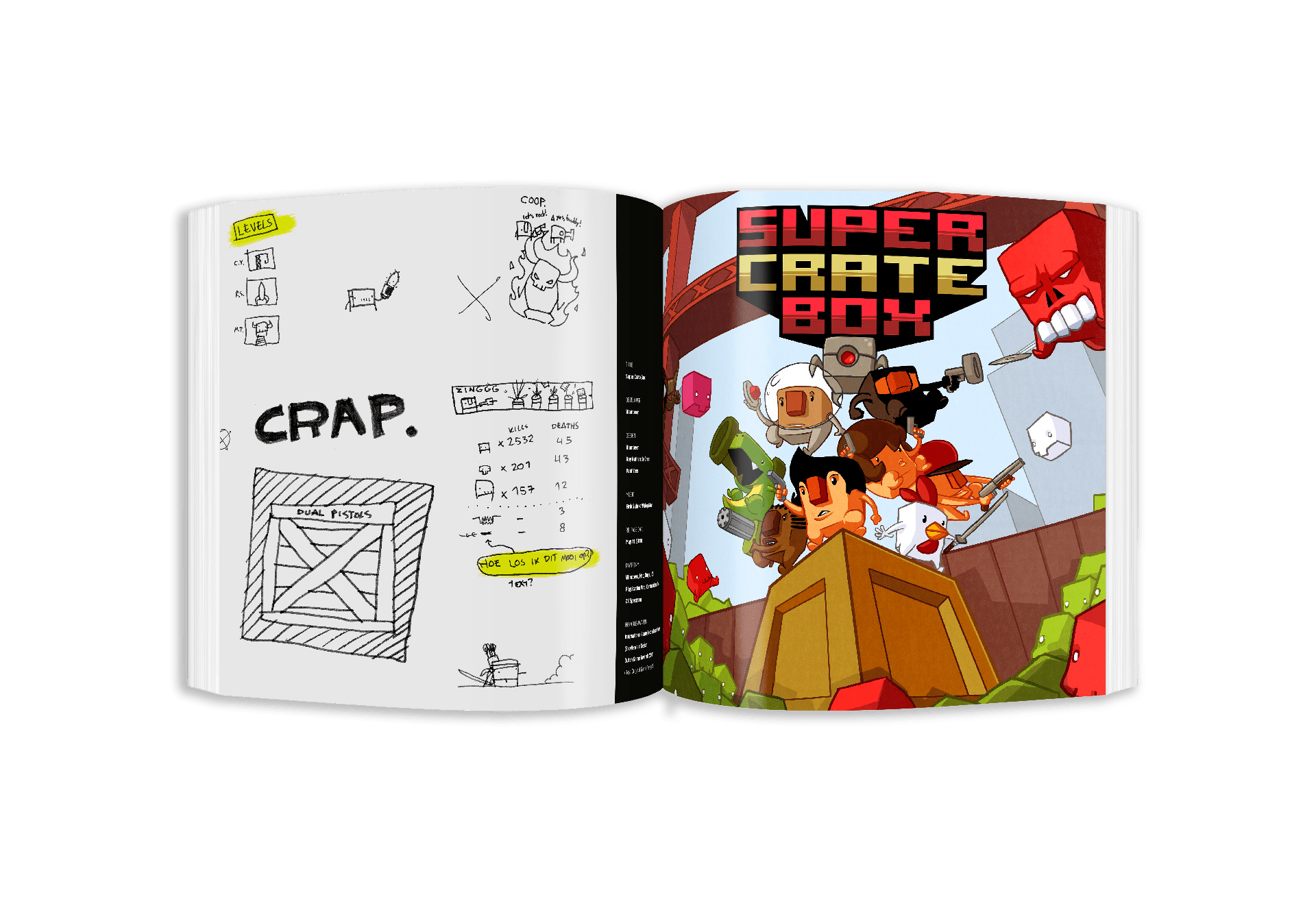September 1st, 2010 marked the birth of one of the most prolific independent game studios of the last decade. Studio Vlambeer, a two-man operation from the Netherlands, would grow to be a force to the good in the world of video games, loved by players and industry peers alike.
After exactly ten years - September 1st, 2020 - the studio is calling it quits. Surprising no-one after years of meager news from the studio, Jan Willem Nijman and Rami Ismail decided to formally end their cooperation and pursue individual carreer paths. And yet Vlambeer's legacy lives on. There's all those wonderful titles they succesfully launched, like Nuclear Throne, Ridiculous Fishing, Luftrausers and Super Crate Box. And there's the new projects Jan Willem and Rami will bring to the world: Rami busying himself with global game developers conference Gamedev.world, Jan Willem with new games like the upcoming Disk Room.
The staff at Cook and Becker has always felt warmly about the studio, and proudly published the studio biography 120 Years of Vlambeer and Friends. Bringing Back Arcade Games Since 1986 (2016). In honor of the 10-year anniversary we discounted the book: both the Standard Edition and the Collector's Edition are 10% off (discount prices already reflected in the listed prices). Click the link for details.
Also, to honor Vlambeer's history, we look back to how it all started, in an excerpt from the book you can read below.
Book excerpt:
Chapter III: College Dropouts
First published in '120 Years of Vlambeer and Friends' back in 2016. Images taken from the book. All rights reserved.
Before long, Jan Willem found himself on his first game development show, INDIGO, to showcase some of his work. One of these projects, Crates From Hell, featured a small humanoid in a platform area, fending off enemies as it moves to collect weapon crates that randomly appear throughout the (single-screen) level. The action-arcade style demo grabbed the attention of other, more established developers, as well as game journalists. Special attention was given to the originality of the design. While most designers would be satisfied with a traditional function of crate collection (finding new weapons or ammo) and would attach the score system to the shooting of enemies, Nijman turned the design on its head. Every crate you collect adds to your score, giving players a reason to keep chasing them. Enemies still had to be dealt with in ever increasing numbers, but killing them did not help your high score. A fun twist was provided by the fact crates contained random weapons: the player never knows if they have to face the next wave of enemies with a powerful bazooka, the tricky disc gun or unwieldy dual pistols.
After exactly ten years - September 1st, 2020 - the studio is calling it quits. Surprising no-one after years of meager news from the studio, Jan Willem Nijman and Rami Ismail decided to formally end their cooperation and pursue individual carreer paths. And yet Vlambeer's legacy lives on. There's all those wonderful titles they succesfully launched, like Nuclear Throne, Ridiculous Fishing, Luftrausers and Super Crate Box. And there's the new projects Jan Willem and Rami will bring to the world: Rami busying himself with global game developers conference Gamedev.world, Jan Willem with new games like the upcoming Disk Room.
The staff at Cook and Becker has always felt warmly about the studio, and proudly published the studio biography 120 Years of Vlambeer and Friends. Bringing Back Arcade Games Since 1986 (2016). In honor of the 10-year anniversary we discounted the book: both the Standard Edition and the Collector's Edition are 10% off (discount prices already reflected in the listed prices). Click the link for details.
Also, to honor Vlambeer's history, we look back to how it all started, in an excerpt from the book you can read below.
Book excerpt:
Chapter III: College Dropouts
First published in '120 Years of Vlambeer and Friends' back in 2016. Images taken from the book. All rights reserved.
Before long, Jan Willem found himself on his first game development show, INDIGO, to showcase some of his work. One of these projects, Crates From Hell, featured a small humanoid in a platform area, fending off enemies as it moves to collect weapon crates that randomly appear throughout the (single-screen) level. The action-arcade style demo grabbed the attention of other, more established developers, as well as game journalists. Special attention was given to the originality of the design. While most designers would be satisfied with a traditional function of crate collection (finding new weapons or ammo) and would attach the score system to the shooting of enemies, Nijman turned the design on its head. Every crate you collect adds to your score, giving players a reason to keep chasing them. Enemies still had to be dealt with in ever increasing numbers, but killing them did not help your high score. A fun twist was provided by the fact crates contained random weapons: the player never knows if they have to face the next wave of enemies with a powerful bazooka, the tricky disc gun or unwieldy dual pistols.






